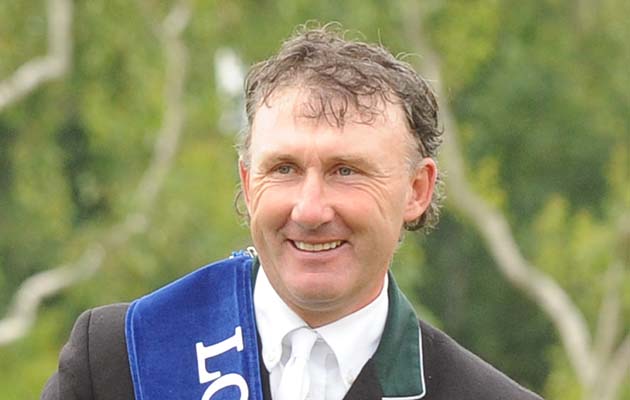Barcelona in 1992 was my first Olympics, and the last year of a big, brutal Olympic showjumping course.
I was representing Ireland then, and Britain was fielding a crack team featuring some of the best horses in the world. There was Milton with John Whitaker, Mon Santa with Michael Whitaker, Dollar Girl with Nick Skelton and Denizen with Tim Grubb.
The course was enormous in the second individual round. I can clearly remember watching fences crashing down and poles breaking.
Nick fell off, and Michael said he had to let the reins go on Mon Santa so the horse could see the poles on the way down.
I said: “I’m going to jump a clear — it will be easy. By the time I get in they won’t have any poles left.”
Safety for all
The biggest legacy we took away from that Olympics was the introduction of the safety cup. For me, it was the best thing that ever happened in showjumping course-design.
There has been a fashion, especially in Germany, for building short, two-stride distances in combinations. Course-builders think it’s tricky and introduces a challenge, but the risk is that a horse will pick up on one stride — as Ben Maher’s Diva did at the European Championships in Aachen last year.
In these situations, safety cups save a horse and rider; without them you would risk a rotational fall.
In showjumping, we’ve been fortunate to have this innovation, but I am troubled to see that in other disciplines, course-building and design is still leaving riders vulnerable.
William Fox-Pitt and Pippa Funnell have both suffered really bad falls in the past 12 months. When you include Andrew Nicholson, another top rider to have been seriously hurt, in this mix, it’s a very concerning picture.
It makes me ask what is being done in eventing to stop people getting injured?
Sixty-two event riders have died globally since 1993. These statistics are enough to make anybody ask what is going on.
I can remember the days of Lucinda Green and Ginny Elliot, when cross-country was all about big, free-flowing fences. Now, much of the course-design seems to resemble traps for horses.
I’ve helped William Fox-Pitt for many years with his showjumping and when someone of his calibre gets injured, you have to question it.
When I’ve spoken to William, he acknowledges that in parts the cross-country has now been slowed down and demands a lot of control.
When you are travelling slowly, and have to jump narrow, tricky fences, it becomes a risk. Even if the rider doesn’t make a mistake, they have slowed the canter so much that if the horse leaves a leg, there is not enough forward momentum to push the horse away from the rider if it falls.
It’s no coincidence that in racing — where there is more speed — jockeys might break bones, but you rarely hear of them dying.
Course-designers need to shoulder some responsibility for what is happening in eventing.
Courses need to be more free-flowing, even if it means dumbing down the cross-country and making the showjumping a tougher test.
Ref: Horse & Hound; 9 June 2016

